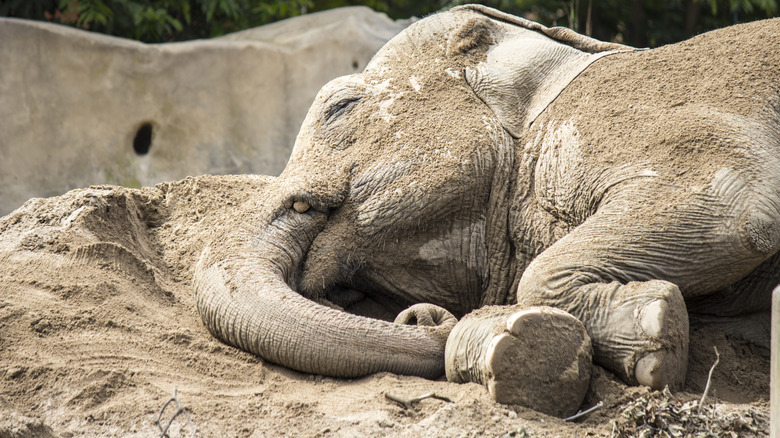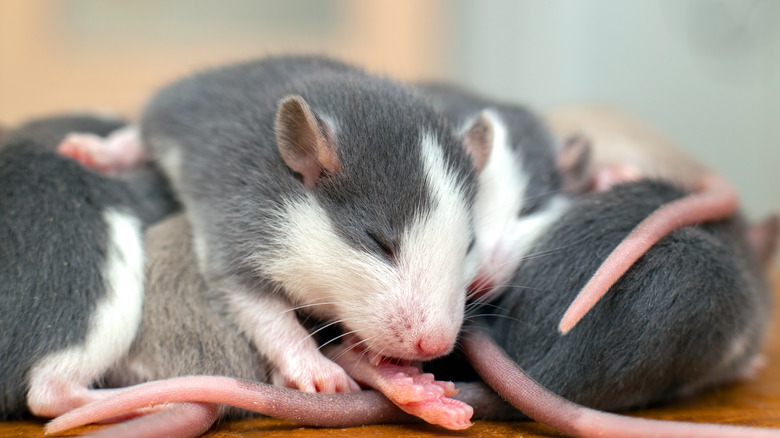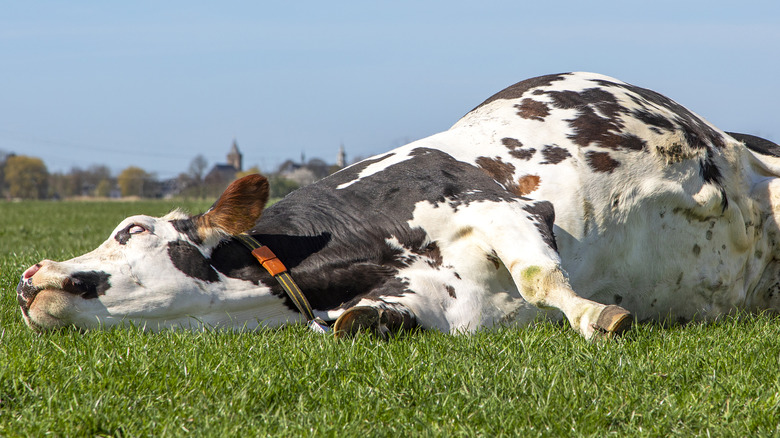Why Animals That Can Sleep Standing Up Evidently Only Dream When Lying Down
According to the U.K.'s National Health Service, adults should be getting about 7-9 hours of sleep every night. Whether you hit those guideline hours of blissful sleep or not, you surely know just how absurdly difficult it can be to extricate yourself from your beloved bed in the morning. The whole phenomenon of sleep is a fascinating thing in and of itself, particularly when it comes to dreaming. There are also things about sleep that still can't be explained.
Dreams can present us with outlandish scenarios like being chased through a purple and yellow sewage pipe made of rubber by a flock of sentient umbrellas. It's unclear where our sleeping selves dredge this sort of thing up from. Animals, it seems, dream as well, and a curious thing appears to happen when they sleep standing up as opposed to when lying down.
If you've ever watched your dog's legs pump furiously and hilariously as they sleep, you'll know that animals surely can dream too. Whatever they're delightedly chasing in their minds, it seems that their minds work on a similar principle to ours: Sleep Foundation states that, for us, REM sleep tends to mark the dreaming period, and that the limbs are rendered inactive during this period to prevent us taking off after that ball or doing whatever it is that we're dreaming of doing for real.
Perchance to dream
The Massachusetts Institute of Technology has performed some groundbreaking research into the dreams of rats. "We looked at the firing patterns of a collection of individual cells to determine the content of rats' dreams," stated Matthew Wilson of MIT. "We know that they are in fact dreaming and their dreams are connected to actual experiences." In the experiment, rats were trained to follow a route. Their brains were studied while doing so, and then during REM sleep.
Several of the rats' brains were seen to work in almost the exact way they had while they were following the route, the outlet reported. While dreaming, then, it appeared that they were "remembering" or "reliving" the action, as we may during dreams about places we've been to or people we've met.
Certain animals like elephants sleep while standing, BBC Science Focus reports. Specific biology is required to sleep standing up, though. The University of Pennsylvania's Amy Johnson explained to Oakhurst Dairy, "The legs of horses [and other animals] have what's known as the 'stay apparatus.' Their limbs contain tendons and ligaments that allow the animal to remain standing with minimal muscular effort." Thanks to this, they can evidently sleep lightly for extended periods of time, Johnson explains.
The key to dreams
What of protracted periods of deep sleep, REM sleep that is conducive to dreaming? Oakhurst Dairy goes on to suggest that for this, cows lay down and get comfortable just as we would. It seems, then, that sleeping standing up doesn't tend to lead to dreams, for just that reason.
The January 2020 study "Do all mammals dream?" from Paul R. Manger et al, via the National Library of Medicine, used — among others — the example of African elephants. "It was found that the majority of sleep in the two female matriarch African elephants recorded from occurred while standing, with lying down to sleep occurring only every third or fourth day ... [I]t would appear reasonable to conclude that sleep while standing correlates with non-REM sleep."
The authors conclude, " ... [P]erhaps the periods when these animals lie down to sleep might include REM sleep, as muscle atonia is indicative of REM sleep in other mammals." Much remains unclear, including the depth of and extent to which animals' dreams can be compared to those of humans. Nevertheless, it seems that dreaming while sleeping standing up is unlikely.


